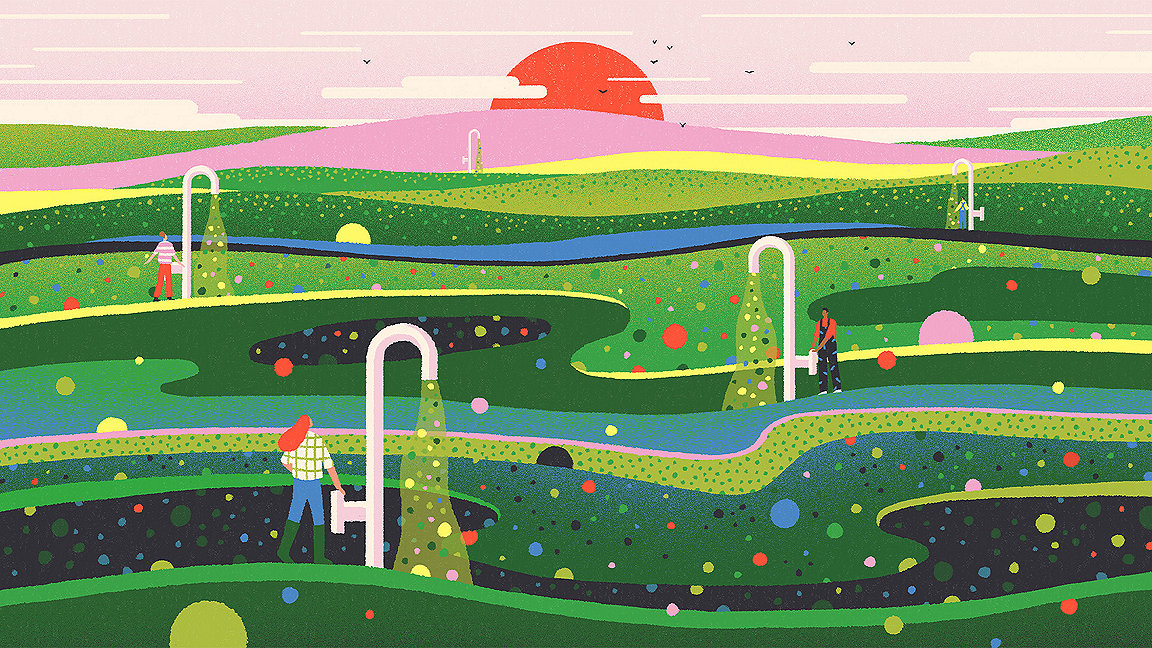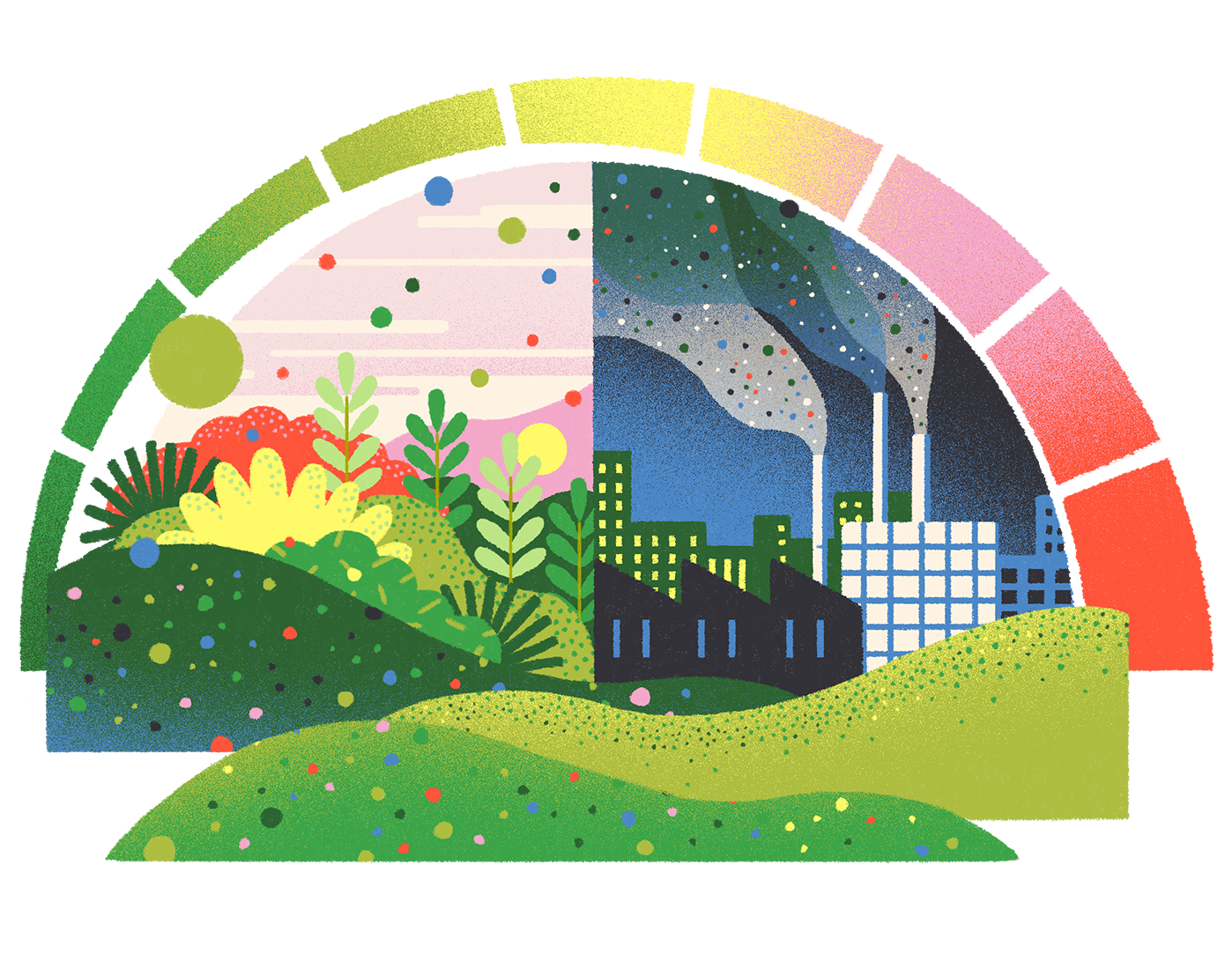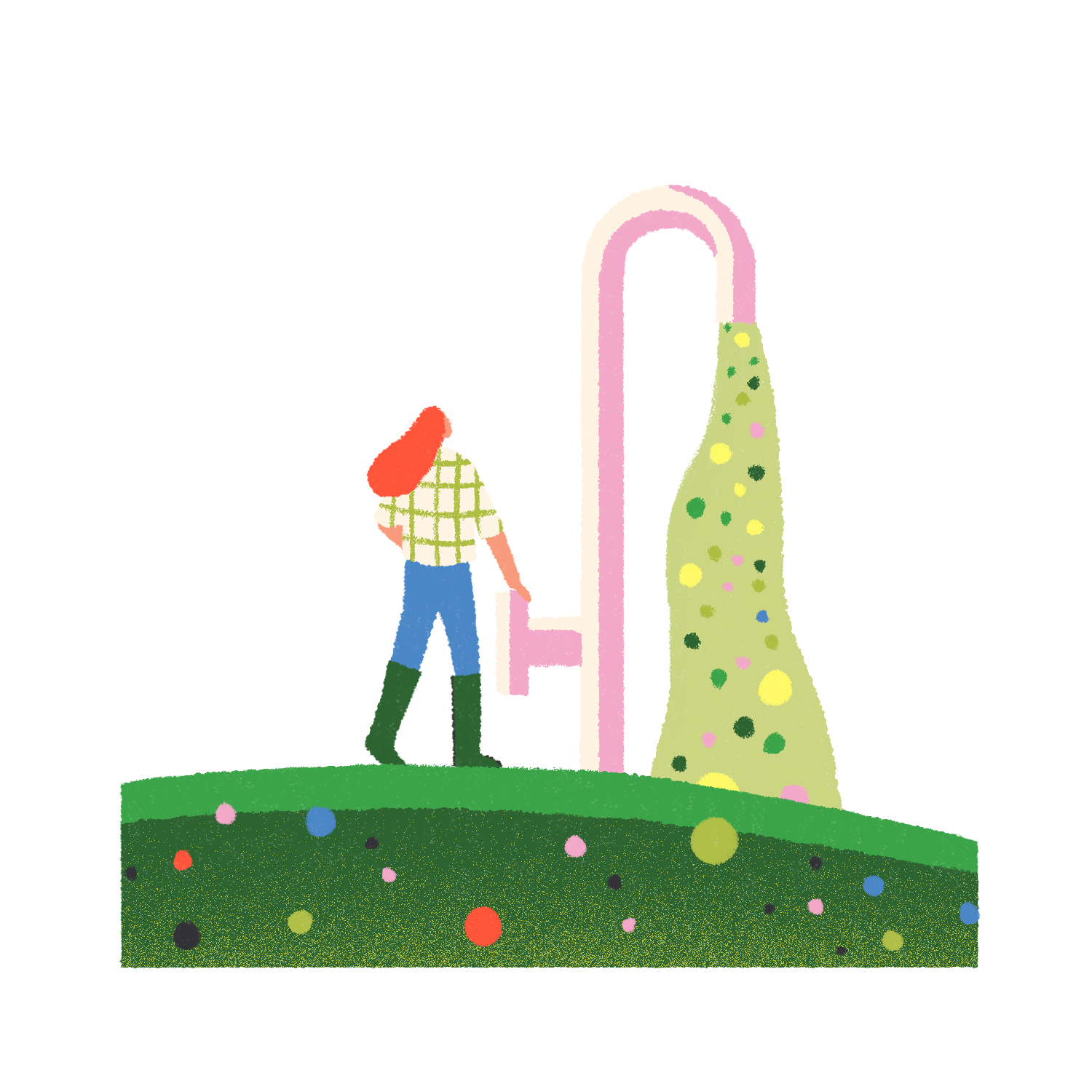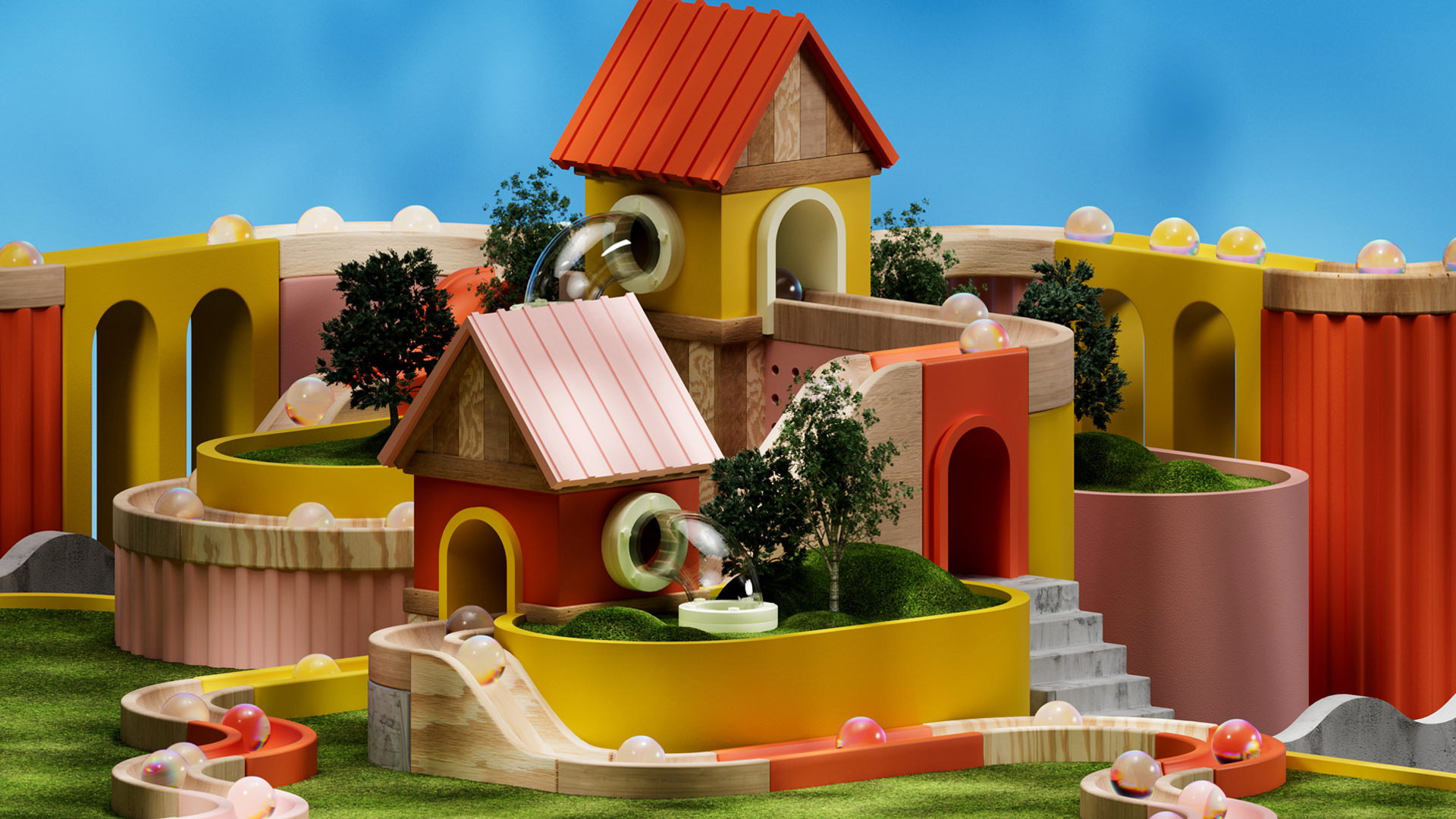
Illustrations by Yukai Du
Dr Elizabeth Stockdale of the National Institute of Agricultural Biology (NIAB) describes herself as “happiest in a hole in the ground, rubbing dirt between my fingers, talking about how important soil is”.
When she speaks about soil sequestration – storing carbon in soil – she likes to use the analogy of a bath. If we imagine soil is a big bathtub, she says, there are ways of turning on the taps that will fill it with carbon. Different soil types are like different sized baths, but because of long-term soil management some of the soil across the world does not currently hold much carbon. With the right approaches however, you can turn on the taps more fully and top it up.
“The way it gets complicated, is that it isn’t an infinite sink,” explains Stockdale. “It fills up and can’t hold any more. Then the ‘overflow’ kicks in and it will start releasing carbon again.”
Over the past 12,000 years, agriculture is believed to have released about 110bn tons of carbon into the atmosphere – equivalent to 80 years’ worth of the US’s current annual carbon footprint. This release has largely been due to the felling of woodlands and other natural habitats to make way for agricultural land, along with disturbance of the soil that is associated particularly with arable farming. It is the top 30-40cm of soil in which most carbon is held – the same layer that is continually disturbed by crop planting and harvesting.
The International Panel on Climate Change reported in 2019 that 8.5% of global CO2 now comes from agriculture (with another 14% attributed to the land clearance that creates new farmland). But as well as a cause of emissions, land can, to some extent, also be a solution to them as scientists try to find ways of recapturing as much of that carbon as possible. One obvious way is to store or sequester it in the organic matter it came from. Much of the current work involved in soil sequestration is about defining at what point a particular soil reaches that point of saturation, and how best to keep hold of its carbon.

Over the past 12,000 years, agriculture is believed to have released about 110bn tons of carbon into the atmosphere – equivalent to 80 year’s worth of the US’s current annual carbon footprint.
The science of soil
While reforestation is familiar as a means of decarbonising the planet, the related concept of soil sequestration is less well-known among the general public.
“It’s very easy for people to visualise a forest but it takes 70 years to get there,” says Professor Graeme Paton who heads the University of Aberdeen’s School of Biological Sciences. “If you look at a forest of, say, Scots pine trees, only about 10% of carbon captured through photosynthesis is held in the body a tree. The other 90% is in the soil.”
In an ideal world, Paton contends, the best way of sequestering carbon would be to put up a fence around a good acreage of land and “let nature take its course. As soon as you intervene, you’re using carbon – often to offset carbon.”
He gives the example of maize, which is increasingly grown to provide biofuel but is often associated with intensive cultivation and bare ground over winter – both increase the risk of environmental harm. Similarly, until quite recently, farmers were encouraged to drain wetlands – one of the best environments for storing carbon. And, in Scotland, Paton says, the practice of burning off stubble was also common until fairly recently (it is still used widely to control weeds in developing countries). While many farmers have pulled back from some of these environmentally harmful methods, farming associated with soil sequestration can be harder to sell.
Traditional farming methods
Using the soil, at least partially, as a carbon sink is theoretically easy to achieve. It generally involves using more traditional farming methods that allow the structure of the soil to improve, such as incorporating crop residues, growing cover crops and incorporating organic matter. This can be run alongside careful crop rotation that gives the soil an opportunity to recover and lowers the possibility of crop blights. A typical example might be growing legumes after wheat, which reduces the need for nitrogen-based fertilisers.
Low or minimum tillage is another method which encourages soil to hold onto its carbon. Rather than ploughing or turning over the soil after a harvest and disturbing that carbon-rich upper strata, crop residue is left in situ to rot into the earth. Conservation tillage, in which even more of the ground cover is left in place is now widely practised in North and South America.
“Minimum tillage has made a huge difference in the past 10 years,” says Paton. “If the soil is left undisturbed, the carbon moves further down [where it is less likely to be released].”
Where farmers fertilise using organic matter such as manure, this is also an important way to recycle plant nutrients – a matter of necessity, perhaps, as Paton says global reserves of phosphorates, a constituent of many industrial fertilisers, are declining.
These simple techniques can improve soil fertility as well as sequester carbon and perhaps even earn a government grant as part of a whole-farm approach to “carbon farming”, making them a win-win for farmers and the environment. So why aren’t they universally embraced?
On larger, highly industrialised farms, they can be seen as unpractical to follow through at scale. But even on smaller holdings, there are different kinds of hurdles, often financial.
“What we are talking about is a long-term investment,” says Stockdale. “But if you’re short of money, you might not be able to do that. It’s a balance between making decisions now and planning for the future. Farmers often know they should be doing something but it’s not always possible to make it happen.”
There are also issues with practicability with these techniques. Competition for organic matter locally to use as a fertiliser might be high. Low tillage is viable with stubble, for example, but other, more robust waste presents a problem. Paton is currently consulting with a farmer who grows Brussels sprouts. “The sprouts only make up about 15% of the plant – the question is what to do with the remaining 85%.”
There are factors at play such as the soil type itself – clay holds onto carbon far better than free-draining, sandy soils. The environment also has an impact. “In the UK, [high carbon-sequestering] forestry will be much easier in the north and west where it is wetter,” says Paton. “It’s much more difficult on the east coast where it’s getting drier.”
In an ideal world, he would like to see the reinstatement of vast swathes of forest and wetland – but concedes that this is a very long-term goal. Population growth means that these natural environments are constantly under attack.
In the meantime, says Stockdale: “improving the soil to hold carbon is something that any farmer – or even gardener – can and should be thinking about.”

“Improving the soil to hold carbon is something that any farmer – or even gardener – can and should be thinking about” Dr Elizabeth Stockdale, National Institute of Agricultural Biology

